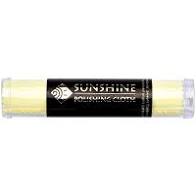Since it was first mined in Turkey over 5000 years ago, silver has been worn as jewelry around the world by many people and cultures. This precious metal owes its popularity not only to its intrinsic beauty, but to its durability, pliability, and relative affordability.
With a small amount of care, your silver jewelry can endure through many years, and even can join your gold pieces to become heirlooms and be passed down to family members.
Handling
One reason silver jewelry is so comfortable to wear is its flexibility, but it can and will break if handled too roughly. You may wrestle that silver cuff bracelet onto your wrist multiple times by reshaping it each time, but trust us -- it WILL eventually snap in two. The best approach is to bend silver not at all or very infrequently, or let a jewelry make the adjustments.
Also, remove silver jewelry for bathing, swimming, putting on lotions and perfumes, or rough activities. Silver can be scratched, dented, or tarnished quickly with these activities. Aside from these times, your silver jewelry can be worn every day with confidence.
Polishing
Why does silver turn black? Is it a sign of bad-quality jewelry? No indeed. It is a normal chemical process in which your silver reacts with sulfur compounds in the air around it. The darkening you see on the surface is actually a thin layer of silver sulfide forming. Luckily, this layer can be rubbed off or removed very easily with the right tools.

Your first line of defense is to own a polishing cloth. These cloths can be used with medium pressure to remove tarnish on all jewelry, with and without gemstones. They contain no harmful or harsh chemicals, so they are safe to use on anything.
If, on the only hand, you want to get chemical on your sterling jewelry, you can go the opposite direction and try a dip like Connoisseur brand. Be VERY careful if you go this route, though. Silver dips are only good for all-sterling pieces, and are NOT safe to use on gold or any gemstones unless they specifically say they are.
Finally, why do some sterling pieces tarnish more easily than others? Good question.
The first answer is that sterling silver is silver mixed with a small amount of alloy such as copper, zinc, or nickel. This adds stability to the silver and keeps it durable for jewelry. (To be called sterling, silver has to be at least 92.5% of the composition, AKA 925) Sterling silver from different sources will have different mixtures of these elements, and may react slightly differently therefore. Copper, for instance, reacts more actively with sulfur than silver, and sterling compositions with slightly more copper may tarnish a bit more quickly.
The second possibility is that something reacted with your jewelry. Did you for instance put on lotion while wearing your rings? Did you kickbox in your favorite necklace and sweat profusely? These are usually the reasons for tarnishing quickly while you are wearing a piece.
And lastly, some silver, often called Italian Silver, comes plated with rhodium. Rhodium is another precious metal mined with platinum which does not tarnish. A silver piece plated in rhodium will remain sparkling for quite a while!
Keep in mind that many people like the look of slight tarnishing, and it even goes well with certain styles of jewelry. So if you're not bothered by it, neither are we! Polishing is not necessary unless you like that sparkling, bright look.
Storing
To keep your jewelry looking nice, find a place to keep it. And no, we don't mean in a tangled mess on your nightstand. Find an earring rack to hang your earrings on - or make one with one of these DIY projects. Keep necklaces hanging or at least separate from each other to prevent chain tangle nightmares.
You can even store your pieces so they won't tarnish. The secret is ziploc bags. Place your pieces in these bags and seal them up tight - this will keep the air out along with those nasty sulfurs. You can store them indefinitely this way.

